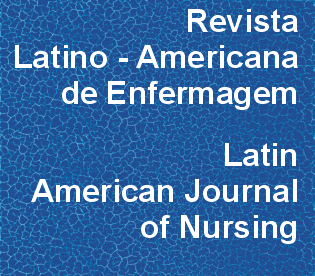Non-verbal mother-child communication in conditions of maternal HIV in an experimental environment
DOI:
https://doi.org/10.1590/S0104-11692010000100007Keywords:
Acquired Immunodeficiency Syndrome, Mother-Child Relations, Nonverbal Communication, HIVAbstract
Non-verbal communication is predominant in the mother-child relation. This study aimed to analyze non-verbal mother-child communication in conditions of maternal HIV. In an experimental environment, five HIV-positive mothers were evaluated during care delivery to their babies of up to six months old. Recordings of the care were analyzed by experts, observing aspects of non-verbal communication, such as: paralanguage, kinesics, distance, visual contact, tone of voice, maternal and infant tactile behavior. In total, 344 scenes were obtained. After statistical analysis, these permitted inferring that mothers use non-verbal communication to demonstrate their close attachment to their children and to perceive possible abnormalities. It is suggested that the mothers infection can be a determining factor for the formation of mothers strong attachment to their children after birth.Downloads
Download data is not yet available.
Downloads
Published
2010-02-01
Issue
Section
Original Articles
License
RLAE’s authorship concept is based on the substantial contribution by each of the individuals listed as authors, mainly in terms of conceiving and planning the research project, collecting or analyzing and interpreting data, writing and critical review. Indication of authors’ names under the article title is limited to six. If more, authors are listed on the online submission form under Acknowledgements. The possibility of including more than six authors will only be examined on multicenter studies, considering the explanations presented by the authors.Including names of authors whose contribution does not fit into the above criteria cannot be justified. Those names can be included in the Acknowledgements section.
Authors are fully responsible for the concepts disseminated in their manuscripts, which do not necessarily reflect the editors’ and editorial board’s opinion.
How to Cite
Non-verbal mother-child communication in conditions of maternal HIV in an experimental environment . (2010). Revista Latino-Americana De Enfermagem, 18(1), 41-47. https://doi.org/10.1590/S0104-11692010000100007



